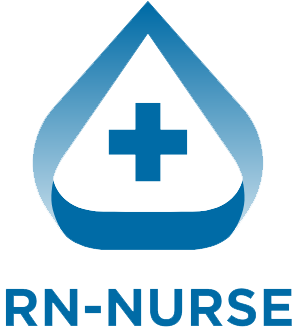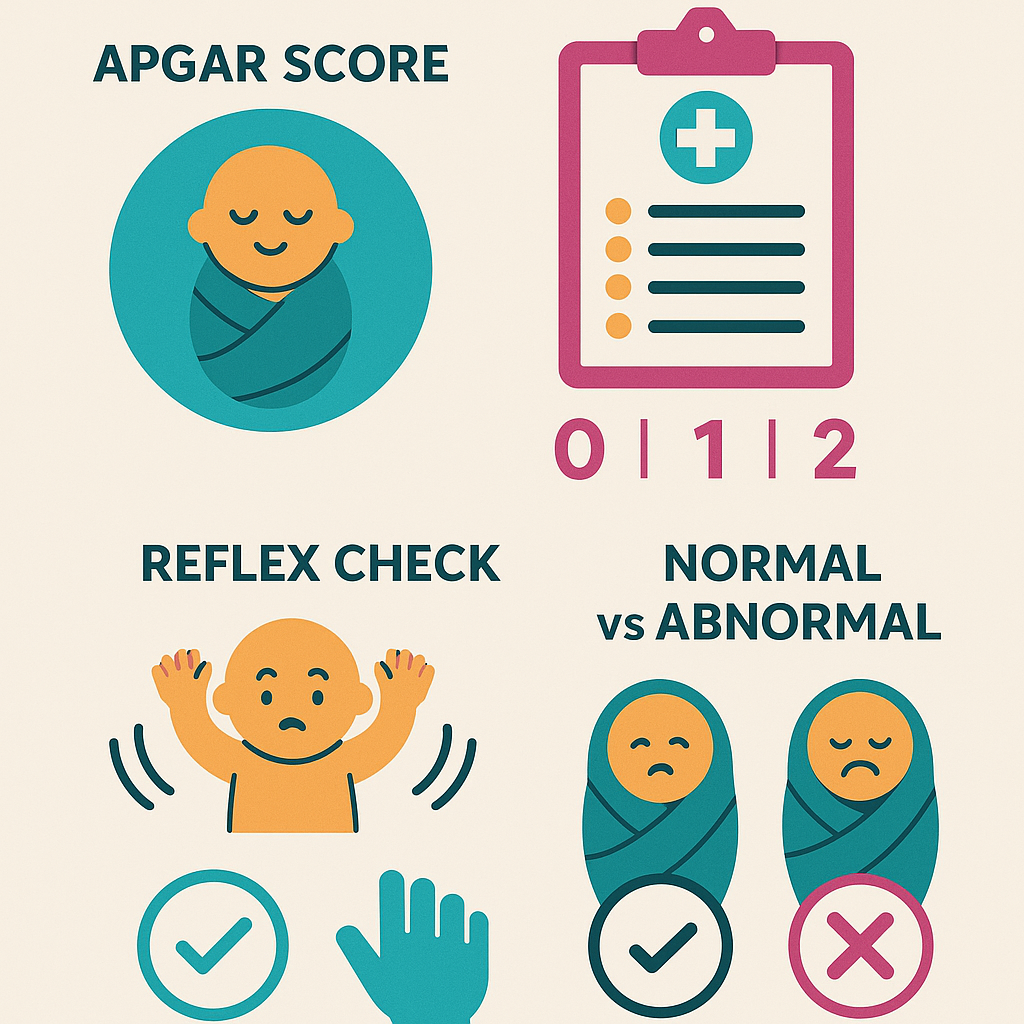When a baby is born, the first minutes of life are crucial. For every nurse, especially those preparing for the NCLEX, knowing how to perform a proper newborn assessment is a must. From the APGAR score to primitive reflexes, a registered nurse (RN nurse) plays a vital role in ensuring early detection of complications. This guide simplifies newborn assessment for nursing students, working nurses, and anyone using a nursing bundle for exam prep.
⭐ The APGAR Score
The APGAR is performed at 1 minute and 5 minutes after birth to quickly assess a newborn’s transition to life outside the womb. Each category is scored 0, 1, or 2, for a maximum of 10 points.
| Category | 0 | 1 | 2 |
|---|---|---|---|
| Appearance (Skin color) | Blue/pale | Pink body, blue extremities | Completely pink |
| Pulse (Heart rate) | Absent | <100 bpm | >100 bpm |
| Grimace (Reflex response) | No response | Weak cry, grimace | Strong cry, pulls away |
| Activity (Muscle tone) | Limp | Some flexion | Active movement |
| Respiration | Absent | Slow/irregular | Strong cry |
👉 Interpretation:
- 7–10: Normal
- 4–6: Moderate difficulty, needs support
- 0–3: Severe distress, resuscitation required
For the NCLEX, a nursing priority question may ask: “What should the RN nurse do if the APGAR is 4 at 1 minute?” → Answer: initiate resuscitation measures (oxygen, warmth, stimulation).
👶 Newborn Reflexes
Newborns are born with primitive reflexes that indicate neurologic health.
- Rooting Reflex – baby turns head when cheek is stroked (disappears ~4 months).
- Sucking Reflex – strong sucking when nipple or finger touches lips (disappears ~4 months).
- Moro Reflex – startle reflex with sudden movement or noise (disappears ~4–6 months).
- Palmar Grasp – hand grasps finger placed in palm (disappears ~6 months).
- Babinski Reflex – toes fan out when foot sole is stroked (normal up to 12 months).
👉 Abnormal Findings:
- Absent reflexes at birth may suggest neurologic damage.
- Persistence beyond normal age may indicate developmental disorders.
⚖️ Normal vs. Abnormal Findings in Newborn Assessment
| System | Normal Findings | Abnormal Findings (Red Flags 🚩) |
|---|---|---|
| Skin | Pink, warm, some acrocyanosis | Persistent central cyanosis, jaundice at birth |
| Respiratory | 30–60 breaths/min, irregular | Grunting, nasal flaring, retractions |
| Cardiac | HR 120–160 bpm, no murmurs | Bradycardia (<100), loud murmurs |
| Neuro | Active, good tone, reflexes present | Hypotonia, absent reflexes, lethargy |
| GI | Meconium within 24–48 hrs | Abdominal distention, failure to pass stool |
| GU | Voids within 24 hrs | No urine output in first 24 hrs |
💡 NCLEX & Nursing Tips
- Expect acrocyanosis (blue hands/feet) in first 24 hrs—normal.
- Always assess before you intervene (NCLEX principle).
- If abnormal, remember ABCs: Airway, Breathing, Circulation.
- Include newborn assessment tools in your nursing bundle to study efficiently.
✅ Key Takeaway
Newborn assessment is one of the most fundamental nursing skills. Whether you’re a registered nurse in practice or a student preparing for the NCLEX, mastering APGAR scoring, reflexes, and identifying normal vs abnormal findings is essential. Having these in your nursing bundle ensures you’re always ready for both exams and real-life practice.

